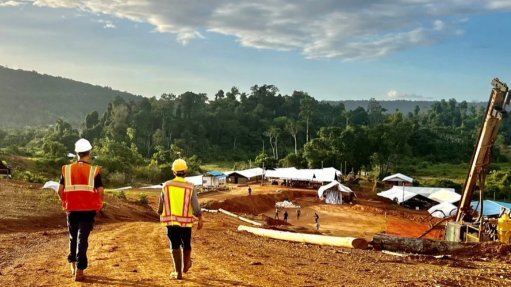Coal dwarfs battery metals in mining deals despite war on pollution
LONDON – Coal and iron-ore dominated mining takeovers in 2017, Thomson Reuters data shows, with buyers favouring the heavily polluting devil they know over the uncertainties of a battery-powered future.
While the biggest deal was in Brazil, China was a top player despite planning to reduce domestic coal and steel-making to tackle smog in its cities. Elsewhere, miners haunted by the overpriced mega-purchases they made before the commodities crash of 2015 hesitated on deals involving the metals needed to run electric cars.
Mining deals totalled $96.8-billion, based on 2 109 mostly modestly-sized transactions in the past year, Thomson Reuters Deals Intelligence showed. That marked a 10% increase in value from 2016 but fell far short of $150-billion to $200-billion totals in the boom years, after which miners had to write billions of dollars off the value of their assets.
More than $92-billion of the 2017 total was spent on coal, iron-ore and steel deals as investors stayed loyal to a sector that still generates steady profits despite the global drive to reduce pollution.
Analysts predict continued demand, even though coal is the biggest source of the carbon emissions that the 2015 Paris Agreement aims to curb. Steel-making, which uses iron ore and coking coal, accounts for an estimated seven percent of industrial direct CO2 emissions, industry figures show.
For the mining sector, the minerals offer an established way of making money when ultra-low official interest rates mean relatively cheap funding is available to purchase assets.
“If you are a buyer, maybe you think you can squeeze some cost out of it thanks to the low cost of capital,” Brewin Dolphin equity analyst Nik Stanojevic said, adding that emerging markets such as China and India will continue to rely on coal for years to come.
Demand from these huge and growing economies will help to counter the trend against fossil fuels.
Norway’s sovereign wealth fund has proposed dropping oil and gas companies from its benchmark index while Britain said on Friday it will set an emissions limit on coal-fired power stations from 2025, forcing them to close unless they use carbon capture technology.
China is pushing to limit consumption of coal, which is used to produce most of its electricity. But its coal output will still be around 3.9-billion tonnes a year by 2020 and on Friday it announced plans to create several “super-large” mining companies by then.
CAUTIONARY LESSONS
Demand for metals used in making batteries, such as lithium, cobalt and nickel, is expected to soar as China leads the shift to electric vehicles. But investors regard them as less certain to guarantee profits because prices are volatile and the basic minerals require additional processing for use in batteries.
Lithium and cobalt CBD3 in particular look overpriced. Spot battery grade 99.5% lithium carbonate in China AM-995C-LTCB, where most lithium batteries are made, rose around a third in 2017, while cobalt prices more than doubled.
Analysts and bankers say mining companies are holding fire on battery deals due to the risk of paying too much, as they did for assets at the height of the commodities boom that culminated in 2012.
“We’re hoping the industry has learned some cautionary lessons,” said analyst Paul Gait at Bernstein, adding it would be very unwise to buy projects such as lithium in the current market. “It should be left to its own devices. The lithium price is coming down. There’s no way this is the bottom of the cycle.”
FUTURE DEALS?
The most active dealmaker of the major miners Glencore - whose $46-billion merger with Xstrata in 2013 was the biggest mining transaction of all time - said repeatedly in the past year that it favoured bolt-ons and partnerships to avoid the high levels of debt involved in over-ambitious deal-making.
In 2017 the number of mining deals grew 27% to the highest figure since 2012 as miners focused mostly on relatively small transactions, the Thomson Reuters data showed.
Brazil accounted for the highest value deal, iron ore giant Vale’s $21-billion acquisition of shareholder group Valepar - although analysts said this was a matter of standardizing the shareholder structure rather than constituting a classic M&A deal. It was the only transaction above $5-billion in 2017.
Brazil’s mining M&A deals in 2017 totalled $22.9-billion, just ahead of China’s $18.8-billion as Coral Pearl International bought Iron Ore Mining International from neighbouring Mongolia and a Chinese investor group snapped up Huaibei Mining at home.
The Mongolian deal falls under Beijing’s Belt and Road policy of developing infrastructure beyond its borders. This has driven deal-making and allegations from Western analysts that China is simply moving its emissions and excess capacity beyond its borders - as many Western economies have long done.
China’s deals were down from $37.7-billion in 2016 following the imposition of capital controls, but overall mergers and acquisitions began to pick up late last year.
With President Donald Trump championing domestic energy production, US companies including CONSOL Energy Inc-Coal Assets and Peabody Energy Corp also made purchases.
Elsewhere, Glencore did a deal with Yancoal to buy a stake in coal assets that the Chinese firm acquired from Rio Tinto.
Shrewd future buys could include nickel or copper - minerals that Gait predicted had further upside as well as exposure to the electric vehicle market that offers a potentially huge source of demand for big miners, once it takes off globally. Copper is coveted as a mineral useful to both the old and new economies, but finding high quality projects to buy at the right price is likely to be hard.
BHP, the world’s biggest miner, said it believes exploration, not acquisition, is the best way to find new copper supplies.
Comments
Press Office
Announcements
What's On
Subscribe to improve your user experience...
Option 1 (equivalent of R125 a month):
Receive a weekly copy of Creamer Media's Engineering News & Mining Weekly magazine
(print copy for those in South Africa and e-magazine for those outside of South Africa)
Receive daily email newsletters
Access to full search results
Access archive of magazine back copies
Access to Projects in Progress
Access to ONE Research Report of your choice in PDF format
Option 2 (equivalent of R375 a month):
All benefits from Option 1
PLUS
Access to Creamer Media's Research Channel Africa for ALL Research Reports, in PDF format, on various industrial and mining sectors
including Electricity; Water; Energy Transition; Hydrogen; Roads, Rail and Ports; Coal; Gold; Platinum; Battery Metals; etc.
Already a subscriber?
Forgotten your password?
Receive weekly copy of Creamer Media's Engineering News & Mining Weekly magazine (print copy for those in South Africa and e-magazine for those outside of South Africa)
➕
Recieve daily email newsletters
➕
Access to full search results
➕
Access archive of magazine back copies
➕
Access to Projects in Progress
➕
Access to ONE Research Report of your choice in PDF format
RESEARCH CHANNEL AFRICA
R4500 (equivalent of R375 a month)
SUBSCRIBEAll benefits from Option 1
➕
Access to Creamer Media's Research Channel Africa for ALL Research Reports on various industrial and mining sectors, in PDF format, including on:
Electricity
➕
Water
➕
Energy Transition
➕
Hydrogen
➕
Roads, Rail and Ports
➕
Coal
➕
Gold
➕
Platinum
➕
Battery Metals
➕
etc.
Receive all benefits from Option 1 or Option 2 delivered to numerous people at your company
➕
Multiple User names and Passwords for simultaneous log-ins
➕
Intranet integration access to all in your organisation


















